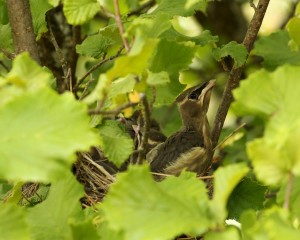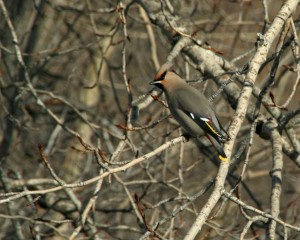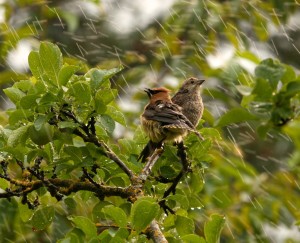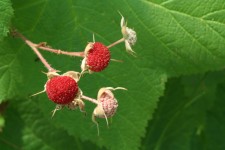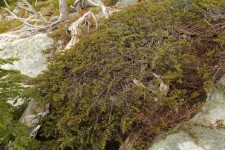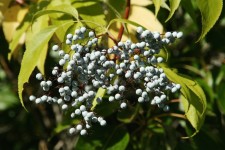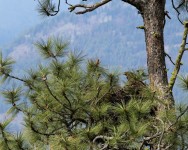By mid-summer most birds have finished nesting and the young have fledged, but one bird is a late nester compared to the rest–the waxwing.
The emergence of insects coincides with the hatching of birds in the spring. But waxwings wait until the berry crop is ripe to raise their young.
Both the Bohemian and cedar waxwing eat more fruit than any other bird in North America, including fruit from serviceberries, chokecherries, dogwoods, crabapples, mountain ash, junipers, strawberries and blackberries. Bohemian waxwings can eat two to three times their weight in fruit each day and more if they are feeding nestlings.
With a diet specializing in fruit, waxwings typically wait until it is ripe before trying to meet the demands of hungry nestlings. They supplement their diet in the summer with insects such as dragonflies, mayflies, mosquitoes, beetles and spruce budworms.
In the winter, they forage for berries and fruit remaining on trees, especially from juniper and mountain ash.
In North Idaho, winter is when the Bohemian waxwing can make an appearance. The cedar waxwing stays year-round so identification can be challenging in the winter. The two species are very similar in appearance but a good look at the wings and belly helps distinguish the two. Both have black masks across their eyes, a small crest on their head and yellow-tipped tails.
The Bohemian waxwing is more colorful than the cedar waxwing with white, yellow and red markings on its wing feathers. The cedar waxwing only has red tips on its wing feathers and the waxy appearance gives the bird its name.
The Bohemian waxwing has white bars across its dark wing feathers that the cedar waxwing lacks. The other difference is that the belly of the Bohemian waxwing is grayish and the belly of the cedar waxwing is pale yellowish.
The nomadic nature of Bohemian waxwings doesn’t guarantee a sighting every winter. Since they mainly eat fruit (known as frugivores), they flock to where the fruit is and once its gone they leave to find more.
Large flocks of both Bohemian and cedar waxwings can quickly devour the fruit on a single tree. They swallow the fruit whole and can even hover to pluck fruit from the end of branches or hang upside-down.
If the fruit is overripe, waxwings can sometimes become intoxicated or even die because the fruit has started to ferment and produces alcohol.
Whether waxwings eat the ripe or overripe fruit, they ultimately help the plant spread the seeds. And since waxwings are nomadic, they have the capability of spreading the seeds throughout an ecosystem.
However, waxwings are not nomadic during breeding season. Waxwings seek a location with numerous small trees and shrubs with fruit and emerging aquatic insects nearby. The female then makes up to 2,500 trips to gather material to construct her nest that is camouflaged with moss and lichens.
The male may help some during construction but he helps more during incubation. The male waxwing brings food to the female while she incubates the eggs and he also perches nearby in a high exposed location so he can guard the nest and alert the female to predators.
When the young hatch, there are ripe berries and fruit to feed them until they are ready to leave the nest and join the flock.

